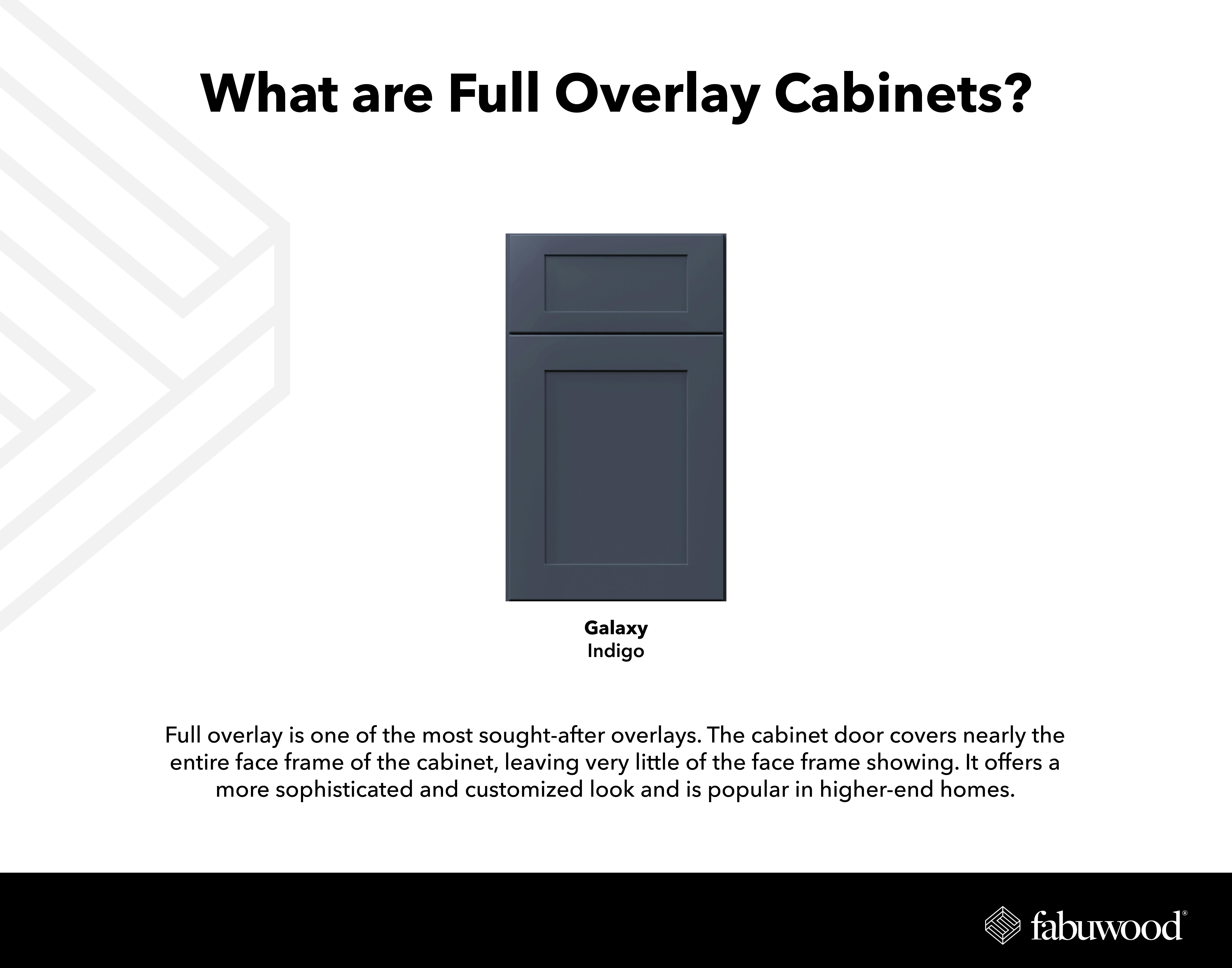Understanding Cabinet Overlays: Full Overlay Vs. Partial Overlay
When choosing cabinetry for your kitchen, one of the decisions you'll have to make is whether to have a full or partial overlay. The overlay refers to how the cabinet door covers the cabinet box and is available in several different types: full, partial, and inset overlay. Each type offers a distinct aesthetic and functionality and affects the overall look of your kitchen. This article will review the two most popular overlays: full and partial.
What is Cabinet Overlay?
Cabinet overlay, also known as the reveal, refers to the amount of the cabinet frame covered by the door or drawer front. This influences the overall design and look of the cabinets. There are three types of overlay: Full, partial, and inset. Each type of overlay varies in how much of the cabinet frame is covered.
What are Full Overlay Cabinets?

Full overlay is one of the most sought-after overlays. The cabinet door covers nearly the entire face frame of the cabinet, leaving very little of the face frame showing. It offers a more sophisticated and customized look and is popular in higher-end homes.
Frameless cabinets, such as our Illume, Venitian door style, are a great full overlay option that offers a sleek, finger-pull instead of traditional knobs or pulls. Learn more about framed vs. frameless cabinets and the difference in overlays here.
What are Partial Overlay Cabinets?

Also called standard overlay, partial overlay covers part of the cabinet frame but leaves a portion of the frame visible around each door and drawer. The part visible is usually 1/2-1 inch.
Partial overlay is a more traditional style seen in classic kitchens. Because of the space left in between cabinets, no hardware like knobs and pulls is needed if you prefer that look. Also, the hinges can either be hidden or exposed with a partial overlay.
Full Overlay Vs. Partial Overlay Cabinets: The Pros and Cons
Full overlay cabinets offer a polished and contemporary look, especially with the concealed hinges.
Comparatively, partial overlays are excellent for many kitchen styles, such as rustic, vintage, and traditional. They are also more budget-friendly than full overlays since they use fewer materials.
Once you choose your overlay style and cabinetry, cleaning your cabinets regularly is important. Our tested and recommended cleaning products and methods will help keep your kitchen pristine for years to come.
Design Styles of Full Overlay and Partial Overlay Cabinets

Synonymous with modern and transitional kitchens, full overlay cabinets offer a variety of design styles, such as our Allure door style series. Our slim shaker Luna line and simple, timeless Galaxy line are just a few of our full overlay styles that speak to every design aesthetic.
Quest is our classic, partial overlay door style. Its clean, simple design is timeless and ideal for traditional kitchens.
Choosing between full and partial overlay cabinets is key to achieving your kitchen's desired look and functionality. Whether you prefer the sleek, modern appearance of full overlays or the traditional, economical style of partial overlays, each offers unique advantages. By understanding your personal preferences, budget, and kitchen needs, you can make an informed decision that enhances your space's style and usability. Check out our Cabinet Visualizer to see how each overlay style works in your space.
FAQS
- What are the different types of overlay cabinets?
There are full, partial, and inset overlays. Full and partial overlays are the most common types. - What are full overlay cabinets?
Full overlay cabinets, also known as European-style cabinets, have a clean, streamlined look. The cabinet door covers the entire face frame, leaving little room between the doors. This works for modern and transitional styles of cabinetry. - What are partial overlay cabinets?
Partial overlay cabinets, a more traditional style of cabinetry, leave 1-2 inches of the face frame visible between doors and drawers. - Are partial overlay cabinets outdated?
Partial overlay offers a classic look. While some may view this as outdated, they are perfect for a timeless kitchen design.
